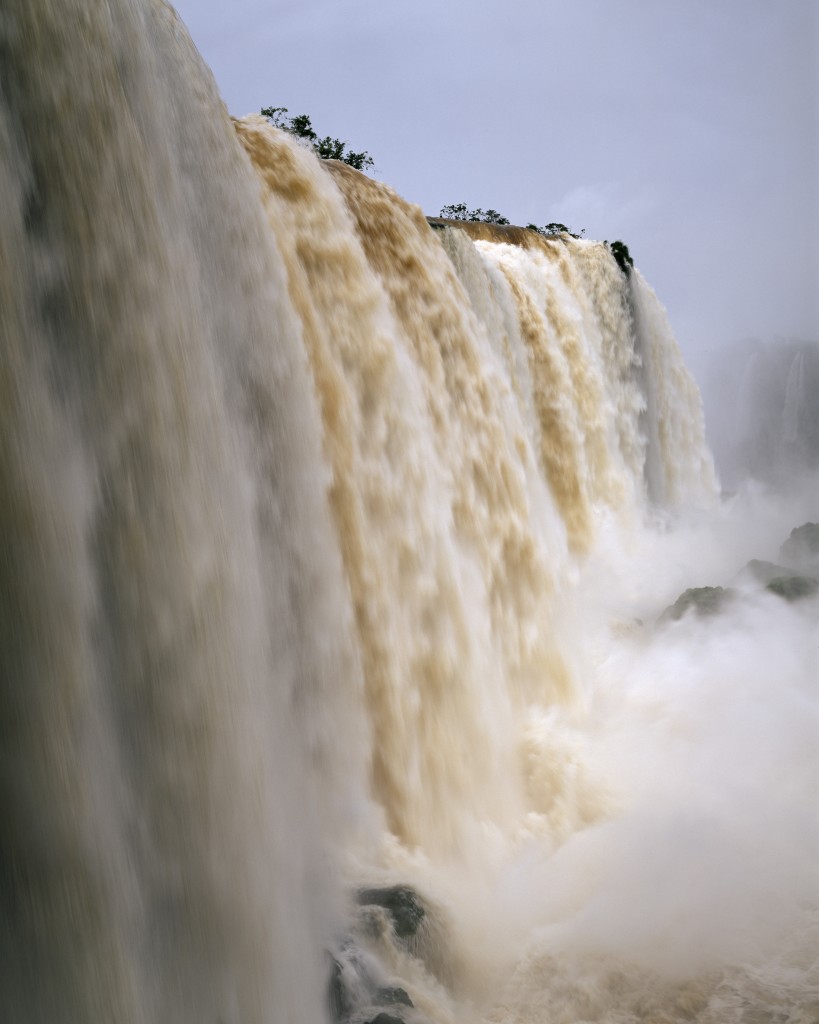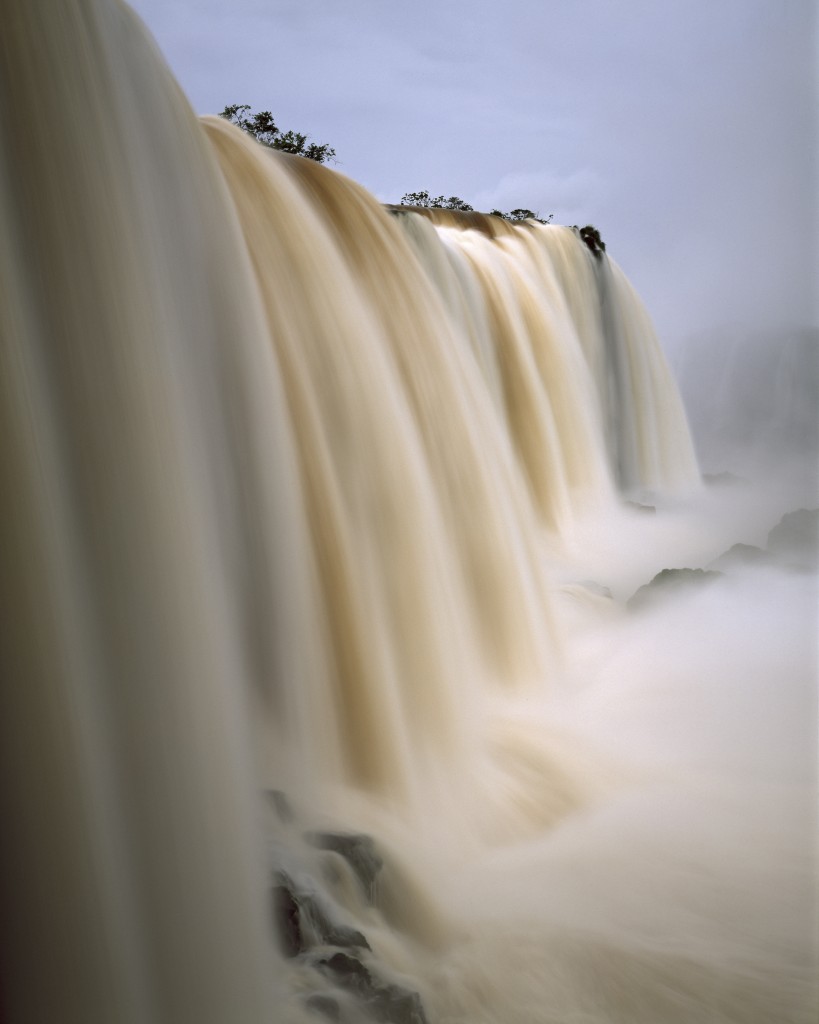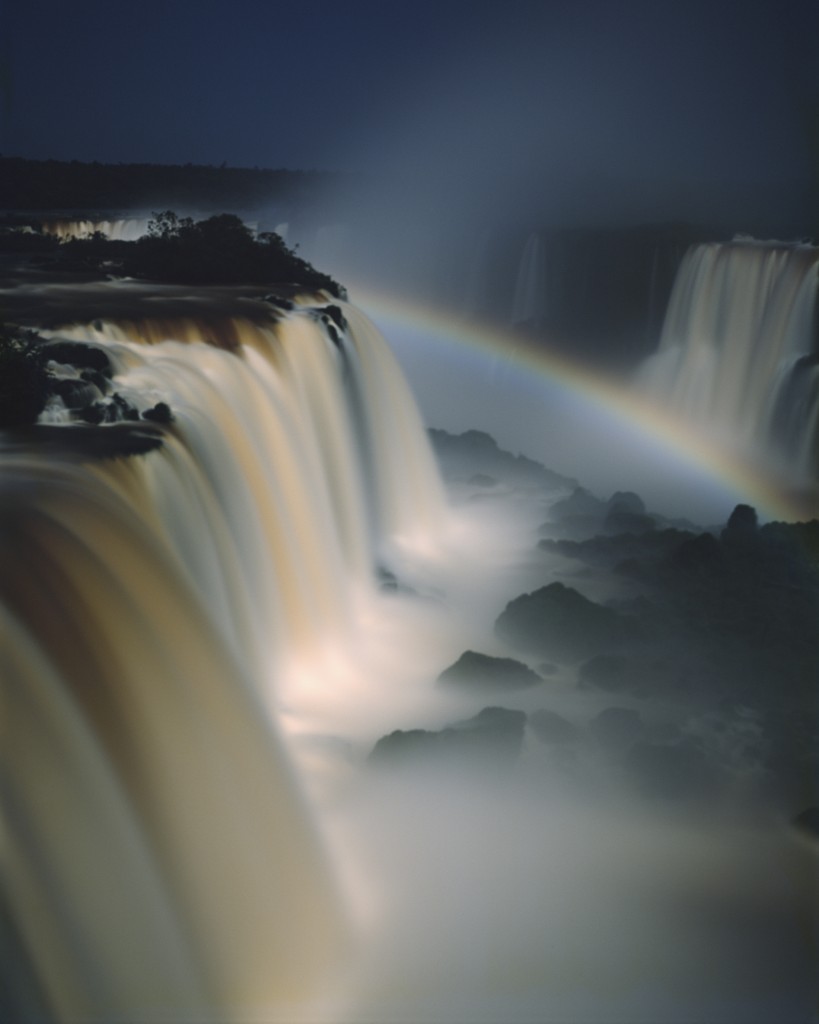
I never understood why waterfalls grab the hearts and minds of photographers. Go to any location that advertises a waterfall and it is guaranteed that there will be a large parking space, lots of cars, and buses with their engines idling*.
Many people, often out of shape, hike along a trail. The first action when the lookout point is reached is to pull out a camera and photograph the falls. In post-processing the images are cropped just above the pool, around which the fellow visitors had their picnic.
Waterfalls just do not photograph well. In nice, sunny weather the contrast exceeds the dynamic range of color film and of most digital sensors. Bright light also produces flair, which is a particular problem for the wet rocks and vegetation that typically surround the falls, and desaturates the color that may be present in the water. From a compositional point of view, the images are often unbalanced and there is no sense of scale, except if one refrains from cropping off the picnickers. This experience, or prejudice, made me shy away from Iguacu when I first visited Brazil in 1997. Four years ago, however, I came back to Brazil and took a detour to the waterfalls.
Iguacu is different: The falls sit in a very interesting ecosystem, straddling the boarder between Brazil and Argentina. Depending on the water level, the number of falls varies between 100 and 300. When we visited in November, the falls consisted of a 3-km-long curtain of water, intercepted by a few islands. But the area offers many photographic opportunities beyond the falls themselves; you can expect to see clouds of butterflies and species such as toucans and coatis.
It is worth spending at least two days on each side of the falls; it is important to get a good perspective on the park overall to appreciate this awesome sight. Whilst the majority of the falls are in Argentina, a better overview can be obtained from the Brazilian side.
There are only two options to stay inside the park within walking distance to the falls: The Sheraton in Argentina and the Hotel das Cataratas in Brazil. Both are a bit pricey and take advantage of their position, but the latter offers the best Chorizo buffet dinner that I ever had in Brazil. In Foz do Iguacu on the Brazilian side or in Puerto Iguacu in Argentina, a large number and diverse range of accommodation can be found but transport sets you back by about an hour in the morning and the evening. It then also becomes impossible to dump gear and upload images between the photo shoots.
The park is closed before sunrise and after sunset, but if you are the first to hike in from one of the two hotels, you will have at least an hour of total peace and quiet (well not actually, because the audible noise from the falls is astonishing, I also realized that this noise gives rise to vibrations on the steel platforms, so watch out were you place your tripod). But an early start is not even essential for a good photograph in soft light. In November we could count on a tropical storm between 3:00 and 5:00 in the afternoon. About an hour prior to the downpour I was able to capture the images displayed here. I used my 4×5 view camera with Fujifilm Provia 100, so not being limited by diffraction, I was able to shoot at all aperture/exposure settings between 1/125 and 2 seconds. Looking at the results it becomes clear that you should aim at the extremes; either a complete freezing of the motion or an abstract interpretation with strong motion blur**. Of course, the use of a DSLR gives you more freedom for experiments at no cost on film material.

Around full moon, the staff of the Hotel das Cataratas offer a walking tour to see the moonbow, a phenomenon also known as lunar rainbow. With my inherent objection against package tours and group travel, I first thought to give it a miss. But the image below speaks for itself. I had only one sheet left of Fujifilm Velvia, which is not the most suitable film because it suffers reciprocity law failure for exposures above 2 minutes. It was impossible to focus on the falls, fortunately there were the lights from the Sheraton hotel across the border. I experimented with a point and shoot digital camera, set at ridiculously high sensitivity to “measure” the light. At f/16 and ISO 100 I arrived at 10 minutes exposure time for my large format camera. It was a hit or miss also because the guides called us to walk back to the hotel.
I only saw the result 2 weeks later. This kind of excitement has pretty much disappeared with the direct feedback from digital capture.

* It seems to me that in the developed world buses cannot be switched off. Their engines get started at the manufacturer’s premises and switched off at the scrap press. Supposedly for the comfort of the driver, the engines are kept idling for air conditioning or heating. But there must be more environmentally friendly solutions.
** Which one do you prefer.
jane KARDASHIAN
26 Jun 2022Hi what month did you photograph the moo bow at Ignacio and where is the best vantage point. Thank you kindly, Jane
Stephan Russenschuck
20 Aug 2022Hi Jane,
it was at the end of November, which is also the best month from the water level point of view.
Stephan